Last Friday, I had the opportunity to tour Miller House and Gardens in Columbus, Indiana.  This landmark is the result of 3 leading designers of their day working in synthesis with a 4th genius, a client who practically built Columbus in the mid-20th Century.  Let me say, if you ever have a chance to tour this facility, don’t delay, and hope for a sunny day, as the interior is punctured with skylights at practically every turn.  Interior photography is forbidden on the tour (and I can’t top the photos posted on the site linked in the first sentence), but I was fortunate enough to get some exterior shots.  The grounds are beautiful with a sprinkling of snow on the ground:
The Miller house might be the most important Modernist house in Indiana.  According to our knowledgeable guide, the house readapted the idea of the conversation pit for the first time since the 1920s.  It is filled with light, but it provided the owners with plenty of opportunities for privacy.  This was a real house that helped to raise 5 children, and there is plenty of function to go along with the eye-catching form.
But I was also impressed with other landmarks and streetscapes in downtown Columbus, much of which might not have been possible without the public works inertia created by J. Irwin Miller. I’m not going to attempt to recreate the excellent post on the city by The Urbanophile, so I’ll simply mention my personal highlights. My wife and I had a few hours to spend in the city before we joined the tour, so we explored the Commons(pdf warning) Community Center:
We then visited the century-old Zahareko’s (automatic music warning), which has been beautifully restored:
After the ice cream appetizer, we headed to Columbus Bar, another classic local spot, which also happens to be run by the people who brew beer known as PowerHouse. My IPA was certainly powerful, and the tenderloin was one of the better ones I’ve tried:
Finally, we headed to the IM Pei designed Library, where I could have killed a ton of time exploring the Indiana Room. I didn’t get a photo, as the exterior didn’t do a lot for me, and the interior was attractive, but difficult for an amateur like me to photograph.
Columbus is truly a testament to the influence that a single individual can have on a community. Â I left feeling inspired, wondering how I could have a greater impact on my own city of Indianapolis. Â I don’t have million dollar investments and I don’t run a company, but I can attend meetings, volunteer, and give ideas to some do-ers in town such as the People for Urban Progress. Â I can attend the Transit Day at the State House next Wednesday and lend my voice for better public transportation options. Â I can demand better for my city.
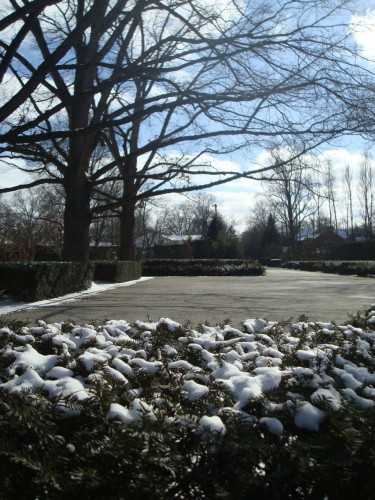
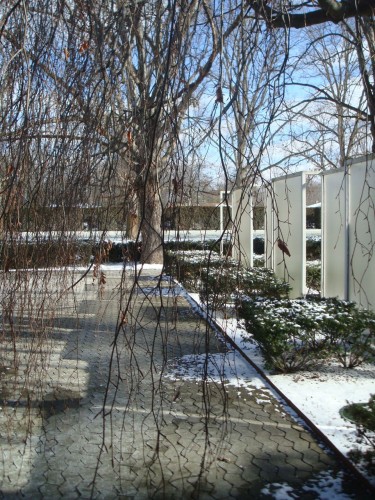
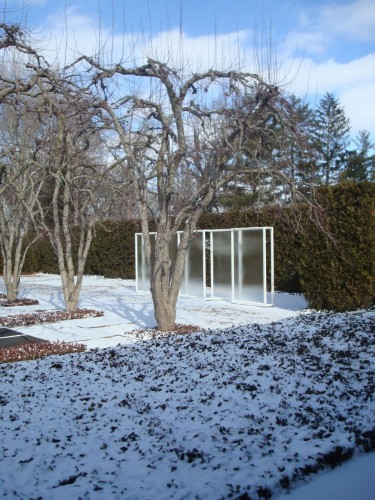
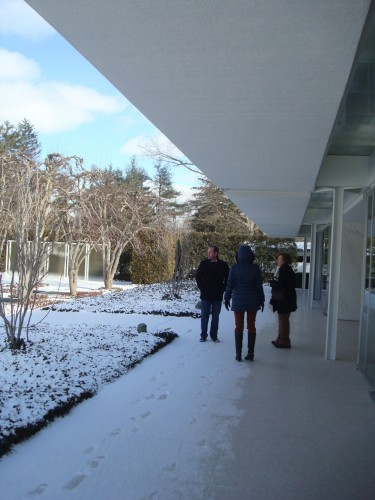
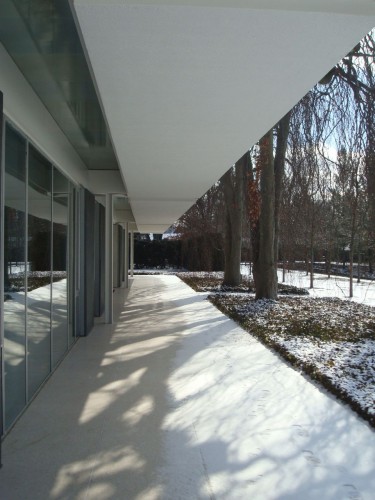
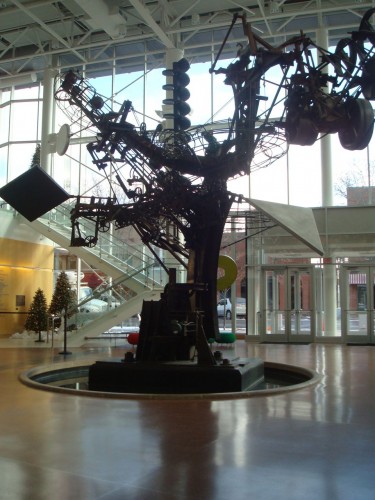
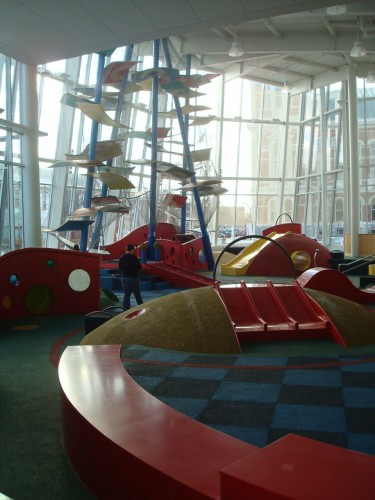
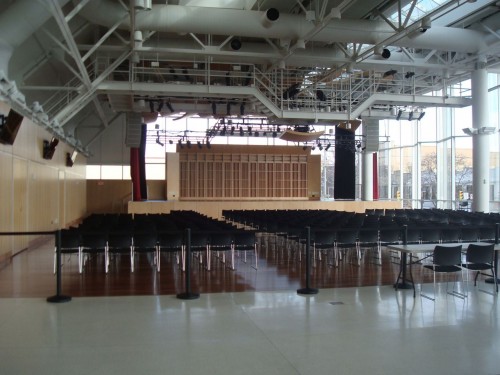
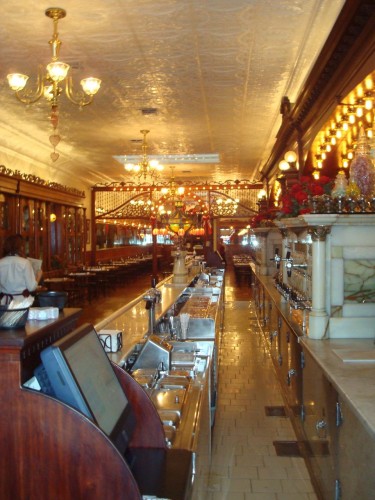
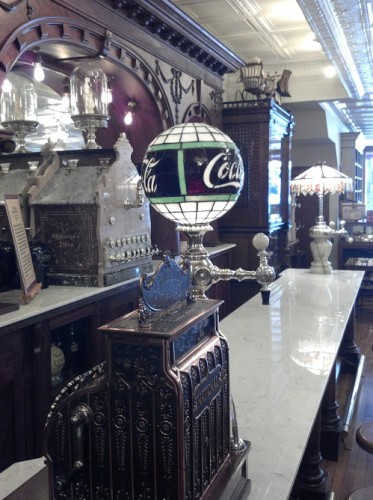
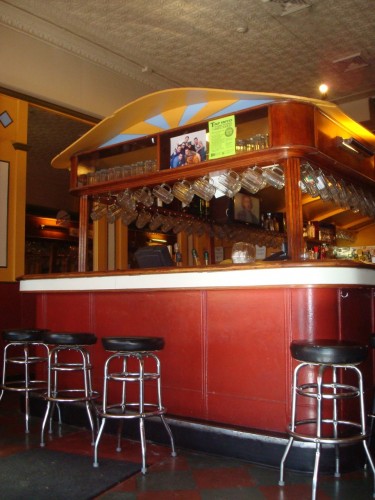
Glad you were able to spend more time there than in my tour–we didn’t even get a chance to snap photos of the Miller House exterior. I wish I had seen the Columbus Commons before the complete reconstruction a few years ago, but it was particularly lively when I was there because of Chinese New Year celebrations. Has the Columbus Children’s Museum moved part of its storefront space over to the Commons? I noticed that a certain little kid-friendly storefront across the street to the east looked vacant.
And I’m hardly an arborist and no expert on the subject, but I was surprised that Miller’s team chose to plant weeping beech trees so close to the house (visible, I think, in Photo #5 from your series above). I know from experience that the wood in beech trees is particularly lightweight and hollow, so that when the trees are isolated from a protective forest, they are much much more prone to snapping during high winds. I just hope the IMA is extra-vigilant about this, since a nasty storm could wreak some real damage if a tree fell on the house.
Don’t want to end on a negative note though–great post on a significant house at a both a state and national level. I’m sure a summer tour would bring about a very different experience.
Eric M,
There are European Weeping Beech trees on both sides of the Miller House that have been there since the house was built and they provide a very dramatic setting for the house particularly in the summer months. Believe me,the IMA is very vigilant about this property and the potential for damage from the weather but we all worry about those type of occurrences.
The vacant storefront you noticed was a very unique little toystore that has closed. The kidsCommons Childrens Museum is still across the street from the Commons. It originally got its start in the former Commons Mall.
Columbus and the Miller House is very different through all four seasons. Come back often! The Miller House tour now allows exterior photography and there are several special tours scheduled that allow interior photography.
Eric M.,
The weeping beech trees are being held together by cables screwed into the upper tree trunks. There are also spouts just under the multi-trunks to allow rain/snow/moisture to drain and help keep the trees from splitting apart in freezing/thawing.
Thanks for stopping by The Columbus Bar (CB), and trying some local Power House beer!